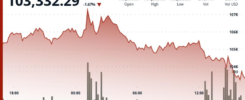While market narratives often point to November as the strongest month for Bitcoin with an average return of 42.5%, this statistic can be deceiving for traders who make their decisions based on historical performance. The average price return for November was actually closer to 8.8%, which presents a vastly different picture than the average suggests. This discrepancy occurs because some exceptional November performance—likely in bull years—skews the average upward, creating unrealistic expectations for the typical month.
The difference between mean returns and median returns is crucial to understanding real market behavior. When extreme years pull the average significantly higher, traders relying on the 42.5% figure may select positions and risk management strategies based on a less likely outcome than the headline suggests. This is a common pitfall in seasonal trading analysis in all financial markets.
For traders approaching November 2025, the more conservative average figure of 8.8% provides a better benchmark for expectations. Understanding the actual statistical distribution of returns, rather than being influenced by seemingly impressive averages, allows for more disciplined risk management and setting more realistic profit targets throughout the month.
This article is for informational purposes only and does not constitute financial advice. Please do your own research before making any investment decisions.
Feel free to “borrow” this article — but don’t forget to reference the original article.
✂️ Copy the article

Editor-in-Chief/Payment Currency Dean is a crypto enthusiast based in Amsterdam, where he follows every development in the world of cryptocurrencies and Web3.





